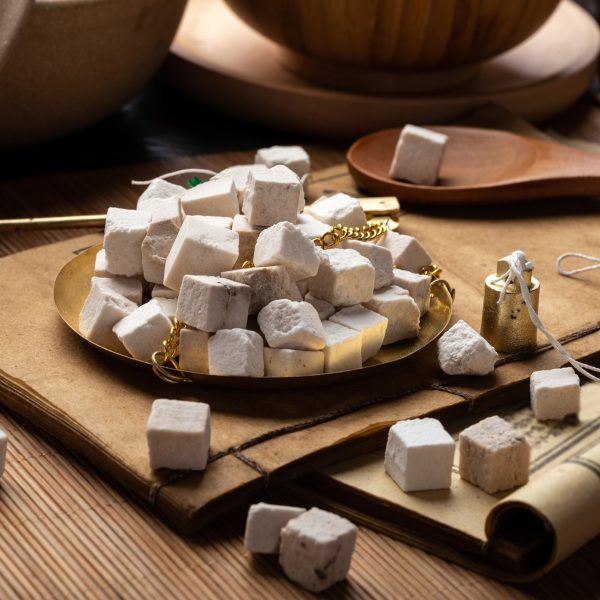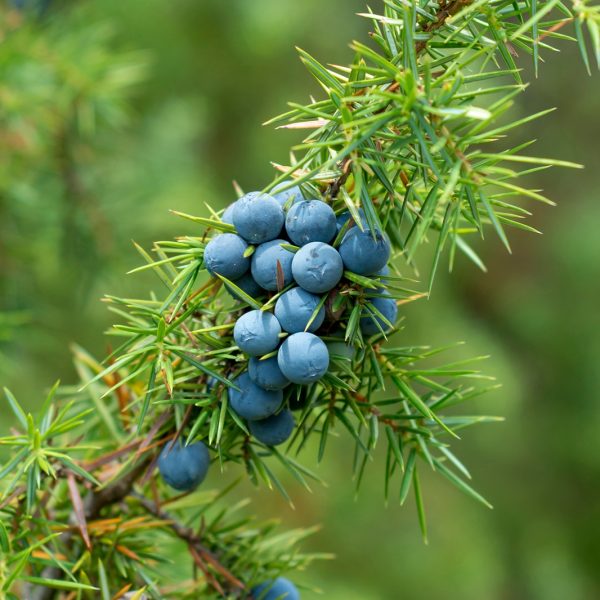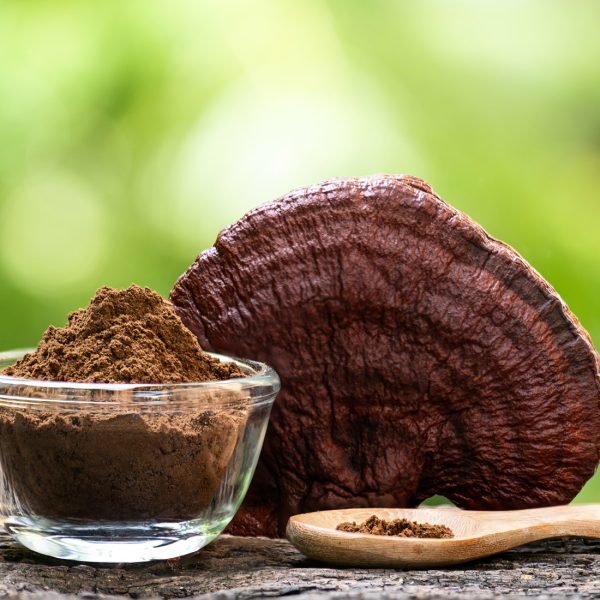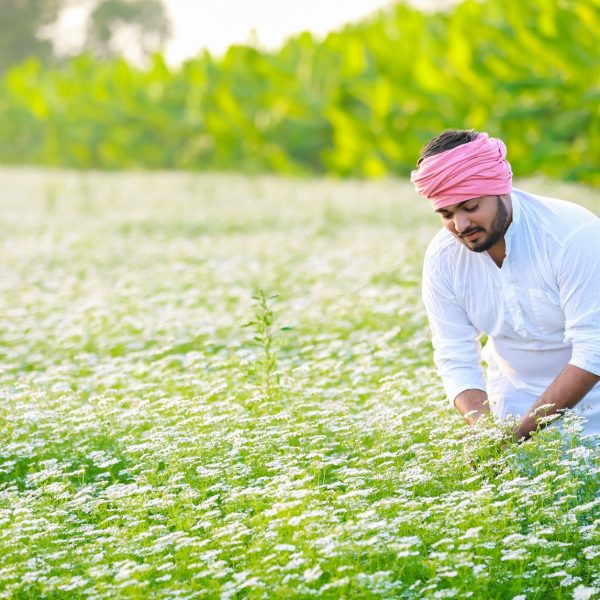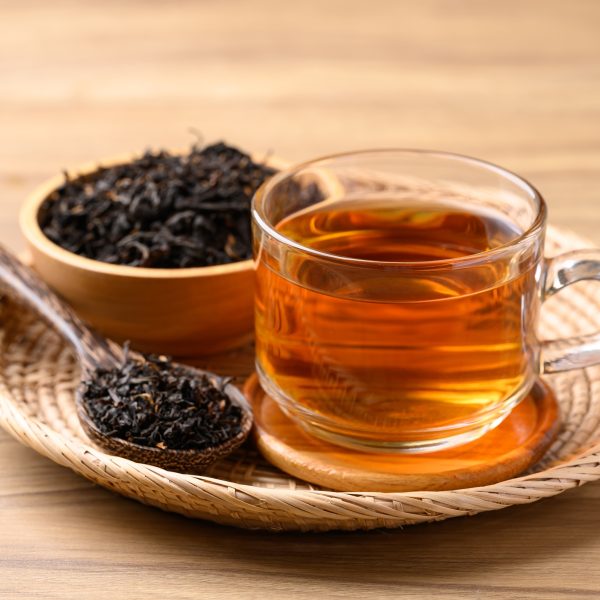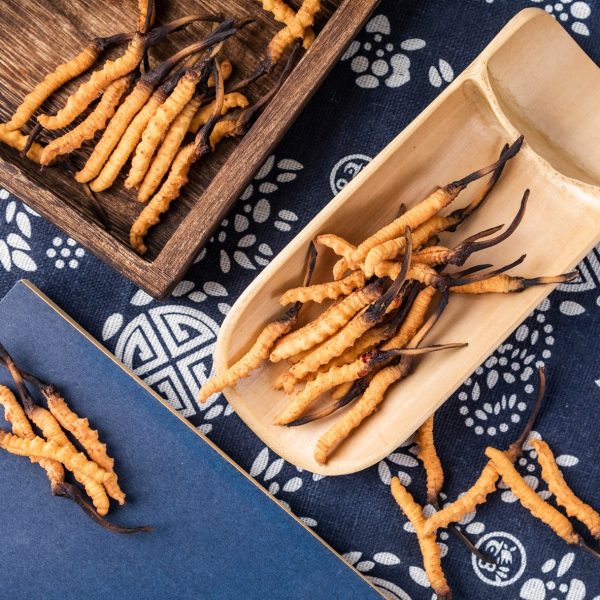-
How does it feel?
The hot and spicy taste of mustard seeds warms up the body and stimulates movement of fluids throughout the system. You will notice a warm feeling flowing from your middle all the way to your fingers and toes as the circulation is stimulated. You might even feel your skin start to sweat, due to the diaphoretic action. The pungent mustard oils help to break down mucus and congestion in the respiratory system, so you might feel your nose start to run and any congestion in your sinuses start to shift.
The mustard oils stimulate the digestive processes, increasing appetite and relieving any congestion in the digestive system. The pungent oils in the seeds are released when they are crushed, so if you are consuming them in food you need to chew them if you want to feel the immediate effects in your sinuses. The seed coating contains a mucilage, which coats the outside of the seed and makes them slimy when soaked in water (1).
-
What can I use it for?

Black mustard flowers (Brassica nigra) This common kitchen spice can be used for a whole range of ailments when either taken internally or used externally. Reach for the mustard seeds for respiratory conditions, common cold, flu, digestive issues, achy joints and muscles, or just to warm you up.
Respiratory
The mustard oils in the seeds are an effective decongestant, indicating mustard seed for any conditions resulting in congestion in the sinuses and lungs (2). An infusion can be used to open the lungs and relieve symptoms of various respiratory problems such as coughs, cold, flu, chronic bronchitis and sinus infections (1). The mustard oils have an expectorant action, thinning mucus so it can be more easily excreted from the body (3). These actions can help to prevent an acute infection, such as the common cold from developing into further infections such as sinusitis, ear infections or pneumonia (4). The stimulation of blood flow, decongestant, and expectorant actions also make mustard seeds useful for conditions such as chronic rhinitis and allergic airway inflammation (hay fever).
The warming effect of mustard seed makes it a useful stimulating diaphoretic (stimulates the sweat reflex), which can help to bring out or ‘break’ a fever. This supports the body’s natural processes of defence against infections. This diaphoretic action combines with the circulatory stimulation of blood flow to the periphery to support the release of heat and toxins via the sweat (5). The warming and stimulating actions can help with the chills and lethargy that accompany a bout of cold or flu (6).
An infusion can be used as a gargle for a sore throat, harnessing both the rubefacient action (dilates blood capillaries increasing circulation) and the antimicrobial properties to both soothe and heal the infection (1, 6).
Musculoskeletal
Mustard seed can be taken internally as an infusion, or mixed into food for a warming and circulatory action that can relieve rheumatism (1). Externally, a poultice or infused oil can be applied to the surface, near the area of internal inflammation. This is effective for relief from rheumatic pain, arthritis, neuralgia (nerve pain), sciatica, gout and muscle spasms (6).
Digestive
Mustard seeds can be used to stimulate appetite and digestion (2). As a carminative, mustard seed can help to relieve flatulence, dyspepsia and colic (7). The circulatory stimulation also increases blood supply to the digestive organs to support the breakdown and absorption of nutrients. The mucilage in the seed coat provides a mild laxative action, useful in cases of chronic constipation (6).
Circulatory
Mustard seed improves the peripheral circulation to the extremities, this makes it useful for those who suffer from cold hands and feet. Mustard seed oil may also support heart health and has been suggested to protect the cardiovascular system in recovery following a heart attack (8).

Black mustard seeds (Brassica nigra) Topically / Externally
When mustard oils are applied to the skin this creates a mild irritation which causes local vasodilation of the blood vessels, drawing blood to the area. This rubefacient (counter-irritant) action can be used therapeutically to bring warmth to an area via the increased blood flow (9). The localised warming action spreads throughout the whole body, relieving chills and supporting the diaphoretic action required during a cold and flu (10, 11).
Musculoskeletal system
External applications of mustard seed are an effective therapy for chronic degenerative diseases affecting the joints and soft tissues (7, 12). Massaging an oil infused with mustard seeds can be used as a warming massage rub for achy muscles and joints, to relieve chilblains and rheumatic pain (9). Research has demonstrated that a mustard poultice or plaster applied daily can improve pain, stiffness, and physical functioning of the joints in patients with osteoarthritis (13).
Respiratory system
Infused oils can be massaged onto the front or back of the chest, or applied as a poultice. The stimulation of blood supply to the area, as well as the absorption of the mustard oils through the skin, helps break up congestion and catarrh in the lungs, and ease a chesty cough (12). Research has demonstrated that a mustard seed plaster applied to the lungs for twenty minutes can improve symptoms in patients with chronic bronchitis, and provide long-term improvement in immune function (14). A mustard seed foot bath can also be used to relieve symptoms of an acute respiratory tract infection, such as a cold or flu (15).
Nervous system
A foot bath has warming and stress-relieving benefits, but adding mustard seed powder to the soak further enhances these benefits. A mustard seed foot bath increases energy, vitality, relaxation, stress relief and whole body warmth, all of which are related to positive health (16). This is particularly useful in chronic conditions where fatigue and low vitality are a key feature, as well as warming the whole body to relieve acute chills (11).
-
Into the heart of mustard seed

White mustard (Sinapis alba) seeds and flower Mustard is a warming stimulant suited to conditions that are energetically considered to be cold, damp and depressed (17). A cold tissue state refers to a lack of physiological vitality or lack of warmth from a poor blood perfusion to the tissues (17). This cold state is characterised by a pale complexion and cold skin and extremities. A depressed tissue state does not refer to the depressed state we think of in relation to mental health, but refers to a physiological reduced function of the tissues. This will often result in low resilience to infections (17). A system in a depressed, damp or cold state can result from excessive mucus secretions which causes a build-up of phlegm, congestion and stagnation (17). Warming of the fluids and movement of the congestion are key to restoring function to the mucus membranes and improving resilience to further infection (18). The stimulating and aromatic qualities of mustard improve tissue function by increasing the circulation and perfusion of blood, returning the warmth and vitality that is lacking in a cold and depressed tissue state (17).
Mustard seeds contain glucosinolates, specifically a constituent called sinigrin, which is broken down to produce allyl isothiocyanates (AITCs), also known as mustard oil (19). The glucosinolates in mustard are sulphur containing compounds, responsible for the hot and pungent properties, also present in horseradish, wasabi and nasturtium (18). It is these strong volatile oils which are decongestant via a mucolytic action, which thins the mucus for easier excretion (9). The mustard oils also have strong antibacterial activity (20) which can be useful in chronic infections, which often arise from mucous congestion. Volatile oils are strongly antimicrobial, and since these oils are excreted from the body via the lungs, they bring this antimicrobial action directly to where it is needed in respiratory infections (6, 9).
Volatile oils stimulate the tissue they come into contact with, creating a slight irritation (9). This aids digestion by stimulating the lining of the digestive tract which increases the flow of digestive juices, supporting digestion and increasing the appetite (9). These same volatile oils relax the muscle wall in the lower part of the intestine, which can ease griping pains and release trapped wind (9).
The allyl isothiocyanates and sinalbin found in mustard seeds also have antioxidant and anti-proliferative effects, which slow the growth of cancer cells, and cause apoptosis (20). This has been shown to be preventative in cancer cell development in a human trial (21), suggesting a protective effect of including mustard seeds as part of a balanced diet. Please note if one is seeking integrative oncology care then it is best to work with a specialist as treatment is nuanced and case specific.
-
Traditional uses

White mustard seeds (Brassica alba) White and black mustard seed remedies have been used since the time of Hippocrates both internally for digestive complaints and externally as a counterirritant to reduce inflammation (6). Internally, it was traditionally used to support the digestive processes and clear mucus from the lungs. Externally, it was applied as a poultice at the site of internal inflammation, such as applying to the chest in cases of pneumonia or bronchitis to break up congestion (1).
In what would be considered today as “heroic medicine”, mustard seed was used in large doses as an emetic to provoke vomiting or purging of the digestive tract, for example in cases of snake bite or mushroom poisoning (1). A teaspoon of mustard seed powder in a cup of boiling water was also thought to relieve hiccups (1). Culpeper promoted both the internal and external use to relieve drowsiness and prevent forgetfulness, and to rub on the temples and nostrils to warm and quicken the spirits (22). He also suggested that chewing the seeds could help with a toothache (22). When applied to a hot foot bath, mustard seeds were used to dispel a cold and relieve a headache (1). It was thought that the increased circulation to the feet drew blood flow and congestion away from the head, relieving the pressure and inflammation causing the headache (7).
The mustard we use as a condiment today has a long history of use to both flavour meals and for the medicinal properties it contains. Gerard in 1623 stated that “the seede of Mustard pounded with vinegar is an excellent sauce eaten with any meates because it doth help digestion, warmeth and stomache and provoke appetite” (1).
-
Traditional actions
Herbal actions describe therapeutic changes that occur in the body in response to taking a herb. These actions are used to express how a herb physiologically influences cells, tissues, organs or systems. Clinical observations are traditionally what have defined these actions: an increase in urine output, diuretic; improved wound healing, vulnerary; or a reduction in fever, antipyretic. These descriptors too have become a means to group herbs by their effects on the body — herbs with a nervine action have become the nervines, herbs with a bitter action are the bitters. Recognising herbs as members of these groups provides a preliminary familiarity with their mechanisms from which to then develop an understanding of their affinities and nuance and discern their clinical significance.
-
Traditional energetic actions
Herbal energetics are the descriptions Herbalists have given to plants, mushrooms, lichens, foods, and some minerals based on the direct experience of how they taste, feel, and work in the body. All traditional health systems use these principles to explain how the environment we live in and absorb, impacts our health. Find out more about traditional energetic actions in our article “An introduction to herbal energetics“.
-
Research

Mustard seedlings (Brassica alba) Respiratory support
A white mustard seed plaster (poultice) was found to significantly improve chronic bronchitis compared to a control treatment (14). In the clinical trial, 59 patients with chronic bronchitis had a Tracheitis Plaster (containing mustard seed with four other ingredients) applied to the back of the lungs for twenty minutes. There was a significantly greater improvement in symptoms, X-ray chest film, and immune system function after the mustard seed plaster, compared to the control group (25 patients). The effect was still present six months and one year after the treatment (14).
Patients with an active respiratory tract infection (RTI) performed a mustard seed foot bath (three tablespoons ground black mustard seed) for seven minutes, on six consecutive days (15). The 103 patients in the intervention group were compared to 36 patients with a RTI who did not perform a foot bath. The foot bath significantly improved perception of coldness, feelings of unwellness, and feelings of exhilaration. The control group only showed a significant improvement in the unwellness scale, though this improvement was slightly less than the foot bath group (15).
Musculoskeletal
The effectiveness of a mustard plaster (powdered black mustard seeds) on osteoarthritic pain, stiffness, and physical joint functioning was assessed in a group of 60 elderly patients with osteoarthritis (13). Patients were evenly randomised and assigned to the control group (no treatment) or mustard plaster, which they applied for 15–20 minutes for 14 days. There was a significant reduction in osteoarthritic scores in the mustard plaster group, and this was significantly greater than the control group. The authors concluded that the practice of mustard plaster application resulted in a reduction in osteoarthritic index among elderly (12).
Cardiovascular support
In a randomised controlled trial (RCT), 360 patients were followed for one-year after experiencing an acute myocardial infarction (heart attack). The patients were randomly assigned to take a daily supplement of either fish oil, mustard oil (20g) or a placebo (8). Compared to the placebo condition, both the fish oil and mustard oil groups had significant improvements in their cardiovascular health. This resulted in significantly reduced cardiac events — cardiac arrhythmias, left ventricle enlargement and incidents of angina. The authors suggested that mustard oil may have a protective effect in those at risk of a heart attack, via a reduction in oxidative stress, reduced inflammation and improved blood cholesterol markers (8).

Black mustard flowers (Brassica nigra) Immune support
The allyl isothiocyanates (AITCs) in mustard seeds have been shown to be preventative from cancer cell development in vitro (20). This effect has also been demonstrated in a human clinical trial of fourteen volunteers, who consumed 20g of a mustard preparation (25mg ITC) for four days (21). There was a significant decrease in two blood markers of cancer risk including DNA damage, as well as a reduction in blood cholesterol levels. The authors concluded that even short-term intake of mustard provides cancer-protective effects, and may be associated with reduced cancer risk (21).
Whole body warmth and vitality
Research in young, healthy adults shows that a warm foot bath containing black mustard powder (80g in 12l) for 20 minutes, increased self-reported vitality (positive sense of energy and aliveness) when compared with warm water alone (16). There was also a shift in autonomic balance (measured by heart rate variability) towards relaxation, and a reduction in overall stress levels (16). Vitality is related to health, particularly of the immune and cardiovascular systems (23, 24) and is even correlated with cancer risk (25). This study supports the health promoting benefits of mustard foot baths (16)
The same research group repeated this study in patients with cancer, using a warm foot bath containing black mustard powder (80g in 12l) for 20 minutes (11). The mustard foot bath increased the warmth perception of the feet and whole body warmth for a longer duration than warm water alone (11)
A recent RCT in 2022 investigated the effect of a mustard compress (applied to the back of the chest) on local skin temperature and self-perceived whole body warmness (10). The healthy adults had a mustard compress (40g powder), ginger compress (40g powder) or warm water applied for 20 minutes (10). The mustard compress was significantly better than the other conditions at increasing the warmth of the local skin area during and after the compress removal. Both the mustard and ginger compress increased the warmth perception, meaning the whole body felt warmer during and after the compress application (10).
-
Did you know?
The seeds will germinate easily all year round, and can be grown into seedling plants to provide salad greens throughout the winter (1).
Additional information
-
Botanical description
All members of the Brassicaceae (cabbage) family have a flower with four petals, arranged in a cross, which is rarely seen in other species (27). Other plants in the Brassicaceae family includes horseradish, wasabi and cabbage, and all species of the family are edible (5). The leaves of the mustard plant are pinnately lobed, meaning there are opposite leaflets radiating from the central line, giving each leaf a feather-like appearance (1). The plants stand erect, from 30-90cm high. Mustard plants have yellow flowers (15–30mm), with four petals in a cross, accounting for the family often being referred to as crucifers, from the Latin for cross (27). The seeds develop in long, thin, cylindrical pods, with the seeds in one row.
-
Common names
- Mustard
- White mustard (yellow mustard)
- Black mustard
- Brown mustard (Chinese mustard)
-
Safety
Mustard seeds are safe to consume in the amounts commonly ingested in foods and via condiments. Some caution is warranted with therapeutic doses in hypothyroid conditions, during pregnancy and breast-feeding and when taking certain medications (2).
The mustard oils are a strong irritant and should be diluted before consumption or direct application to the skin (26). Powdered mustard seed can be used for topical application but can cause skin burning if left for more than 15–30minutes (2, 26). Potency can be reduced by combining with a carrier such as cornstarch or mixing into water or vinegar before applying (2).
Repeated external application should be limited to two weeks, due to a risk of skin and nerve damage with long-term use (2, 11, 26).
The extracted oils/essential oil are classified as severely toxic and irritant to the skin and mucus membrane and should never be used internally or externally (2). Inhalation can cause irritation to the eyes and nasal membranes (2).
The mustard oils are absorbed into the skin and should not be used in cases of kidney disorders (12).
-
Interactions
No drug interactions reported
-
Contraindications
Mustard seed could irritate the stomach lining and consumption is not recommended for use by those with gastric ulcers, hyperacidity, stomach irritation, or those prone to gastric irritation (6, 26).
Mustard seed is contraindicated in children under the age of six-years old (2).
The glucosinolates present in mustard seeds act directly upon the thyroid which could depress functioning, and therefore caution is warranted in hypothyroidism (2). Therapeutic doses of mustard seed remedies should be avoided or only taken under the guidance of a medical herbalist in cases of hypothyroidism (2).
Avoid large amounts of the powdered seed in pregnancy due to potential abortifacient effects, and only consume when breast-feeding under the guidance of a medical practitioner (26). You can find qualified medical herbal professionals on our page for How to find a herbalist.
-
Preparations
Infusion: Crushed seeds or powder can be added to boiling water for an invigorating tea. This spicy, punchy tea is not for the faint-hearted, but it will certainly clear your sinuses.
Poultice: Seeds can be ground into a powder and mixed with water to make a poultice. The poultice is applied directly to the skin, and held in place with a cloth or bandage.
Topical infused oil: Crushed seeds are macerated in oil for 4–6 weeks. Once stained the infused oil is massaged into the skin or used to make a balm with other ingredients.
Foot bath: Mustard seed power is added to hot water to create a foot soak (7).
Culinary: Use by the teaspoon in cooking, add to your fire cider recipe, or make the tasty mustard condiment from the recipe below.
-
Dosage
Infusion: 1 teaspoon for ground mustard seed per cup of boiling water, infuse for 5 minutes, drink up to 3 cups per day (9).
Topical poultice: Mix 4 tablespoons of powdered seeds with warm water to form a thick paste for a poultice. Apply for 5–10 minutes to children over six-years old, 10–15 minutes for adults (12).
Foot bath: Add 2 teaspoons of mustard seed power or crushed seeds per litre of hot water and soak feet for 20 minutes (7)
-
Plant parts used
- Seeds
- Mustard greens and flowers can be added to food.
-
Constituents
- Oils (23-33%): stearic, erucic, essential fatty acids (1, 2)
- Glucosinolates (mustard oil glycosides): sinigrin, sinalbin (2)
- Mucilage (2)

-
Habitat
Both black mustard and white mustard are native to Europe and grow wild across the UK in fields and on roadsides (1, 27). Mustard grows throughout Asia, Northern Africa, North and South America (1). Mustard is largely cultivated throughout the world and harvested for the seed to be manufactured to condiments.
-
Sustainability
Mustard seed is currently unranked by Nature Serve, meaning the global conservation status has not yet been assessed (28). However, it is well distributed across North America, Canada, UK and Europe, and does not appear on the U.S. Endangered Species act (28), or the United Plant Savers “to watch” (29). The International Union for Conservation of Nature (IUCN) have global assessed Brassica nigra and list it as “Least Concern” (30). They state that the species is widely distributed in many parts of Europe, temperate Asia, and northern and northeast tropical Africa with stable subpopulations, and there are currently no major threats reported (30).
You can read more about sustainable sourcing of herbs here.
-
Quality control
Heeding to the safety considerations outlined, mustard seed is a safe herb to take, though it is important to buy from a reliable source. Unreputable sources can be contaminated, adulterated or replaced with the wrong plant material. To ensure the quality of a product look out for certified organic labelling and check that the correct botanical name is used. Also, you should be able to obtain information from suppliers regarding the origin of the product ingredients, to find out where the herbs have come from. There is more opportunity for contamination and adulteration when the supply chain is unknown.
-
How to grow
Sow the seeds in spring in holes 30cm apart. The seeds ripen at the end of the summer, when they are harvested and dried.
-
Recipe
Homemade mustard
Ingredients:
- 50g black mustard seed
- 50g white mustard seed
- 100ml apple cider vinegar
- 1 teaspoon of honey
- 1 teaspoon turmeric powder
- 1 teaspoon of salt
Method:
- Soak the mustard seeds in the vinegar for two days, then add the rest of the ingredients and blend in a food processor until ground into a paste.
- Keep in the fridge.
Recipe adapted from De La Foret (2017) (3).
-
References
-
- Grieve M, Leyel CF, Marshall M. A Modern Herbal. the Medicinal, Culinary, Cosmetic and Economic Properties, Cultivation and Folk-Lore of Herbs, Grasses, Fungi, Shrubs & Trees with All Their Modern Scientific Uses. Dover Publications; 1982.
- Pengelly A. The constituents of medicinal plants: an introduction to the chemistry and therapeutics of herbal medicine. CABI Publishing; 2004.
- De La Foret, R. Alchemy of Herbs: Transform Everyday Ingredients into Foods and Remedies That Heal. Hay House, Inc; 2017.
- Nahas R, Balla A. Complementary and alternative medicine for prevention and treatment of the common cold. Canadian Family Physician. 2011;57(1):31-6. https://www.cfp.ca/content/57/1/31.short
- De La Foret, R. and Han, E. Wild Remedies: How to Forage Healing Foods and Craft your Own Herbal Medicine. Hay House; 2020.
- McIntyre A. Flower Power: flower remedies for healing body and soul through herbalism, homoeopathy, aromatherapy, and flower essences. Henry Holt; 1996.
- Chown V and Walker K. The Handmade Apothecary: Healing Herbal Remedies. Kyle Books; 2017.
- Singh RB, Niaz MA, Sharma JP, Kumar R, Rastogi V, Moshiri M. Randomized, double-blind, placebo-controlled trial of fish oil and mustard oil in patients with suspected acute myocardial infarction: the Indian experiment of infarct survival—4. Cardiovascular drugs and therapy. 1997;11:485-91. https://doi.org/10.1023/A:1007757724505
- Hoffman D. Medicinal Herbalism, The Science and Practice of Herbal Medicine. Healing Arts Press; 2003.
- Vagedes J, Kuderer S, Vagedes K, et al. Do Chest Compresses with Mustard or Ginger Affect Warmth Regulation in Healthy Adults? A Randomized Controlled Trial. Evidence Based Complementary and Alternative Medicine. 2022. doi:10.1155/2022/5034572
- Vagedes J, Kuderer S, Vagedes K, Hiller S, Beissner F, Szőke H, Joos S, Wolf U. Increasing warmth in oncological patients: a randomized controlled cross-over pilot trial examining the efficacy of mustard and ginger footbaths. Integrative cancer therapies. 2021;20. https://doi.org/10.1177/15347354211058449
- Blumenthal M, Busse WR. White Mustard Seed. In: The Complete German Commission E Monographs: Therapeutic Guide to Herbal Medicines. American Botanical Council; 1999. Accessed January 7, 2024. https://www.herbalgram.org/resources/commission-e-monographs/monograph-approved-herbs/white-mustard-seed
- Radha D. A Study to Assess the Effectiveness of Mustard Plaster Application on Osteoarthritic Index among Elderly in Selected Community Area at Tiruvannamalai (Doctoral dissertation, Vignesh Nursing College, Tiruvannamalai). http://repository-tnmgrmu.ac.in/18916/
- Huo GR, Ma LQ, Huang CH. Clinical study on treatment of chronic bronchitis by tracheitis plaster. Chinese Journal of Integrated Traditional and Western Medicine. 2001;21(11):816-8. PMID: 12575372.
- Goetz K, Hinz A, Steinhäuser J, von Rath U. Use of Mustard Seed Footbaths for Respiratory Tract Infections: A Pilot Study. Evidence Based Complementary and Alternative Medicine. 2020; doi:10.1155/2020/5648560
- Vagedes J, Kuderer S, Helmert E, Kohl M, Beissner F, Szöke H, Joos S, Wolf U. Warm footbaths with sinapis nigra or zingiber officinale enhance self-reported vitality in healthy adults more than footbaths with warm water only: A randomized, controlled trial. Evidence-Based Complementary and Alternative Medicine. 2021;12:1-2. https://doi.org/10.1155/2021/9981183
- Wood M. The Practice of Traditional Western Herbalism: Basic Organs and Systems. North Atlantic Books; 2004.
- Bone K and Mills S. Principles and Practice of Phytotherapy: Modern Herbal Medicine. Elsevier Health Sciences; 2013.
- Ganora L. Herbal constituents: foundations of phytochemistry: a holistic approach for students and practitioners of botanical medicine. Herbalchem Press; 2009.
- Boscaro V, Boffa L, Binello A, Amisano G, Fornasero S, Cravotto G, Gallicchio M. Antiproliferative, proapoptotic, antioxidant and antimicrobial effects of Sinapis nigra L. and Sinapis alba L. extracts. Molecules. 2018;23(11):3004. https://doi.org/10.3390/molecules23113004
- Lamy E, Garcia-Käufer M, Prinzhorn J, Mersch-Sundermann V. Antigenotoxic action of isothiocyanate-containing mustard as determined by two cancer biomarkers in a human intervention trial. European Journal of Cancer Prevention. 2012;21(4):400-6. https://www.jstor.org/stable/48504214
- Culpeper, N. Culpeper’s Complete Herbal. Wordworth Editions Ltd; 1995 [1653].
- Ryan RM, Frederick C. On energy, personality, and health: Subjective vitality as a dynamic reflection of well‐being. Journal of personality. 1997;65(3):529-65. https://doi.org/10.1111/j.1467-6494.1997.tb00326.x
- Richman LS, Kubzansky LD, Maselko J, Ackerson LK, Bauer M. The relationship between mental vitality and cardiovascular health. Psychology and Health. 2009;24(8):919-32. https://doi.org/10.1080/08870440802108926
- Folker AP, Hegelund ER, Mortensen EL, Wimmelmann CL, Flensborg-Madsen T. The association between life satisfaction, vitality, self-rated health, and risk of cancer. Quality of Life Research. 2019;28:947-54. https://doi.org/10.1007/s11136-018-2083-1
- Brinker, FJ. Herbal Contraindications & Drug Interactions: Plus Herbal Adjuncts with Medicines. Eclectic Medical Publications, 2010.
- Blamey M, Fitter R, Fitter AH. Wild Flowers of Britain and Ireland: 2nd Edition. A & C Black; 2013.
- NatureServe explorer 2.0. Natureserve.org. Accessed January 27, 2024. https://explorer.natureserve.org/
- UpS list of herbs & analogs. United Plant Savers. Published May 14, 2021. Accessed January 27, 2024. https://unitedplantsavers.org/ups-list-of-herbs-analogs/
- IUCN red list of threatened species: Brassica nigra. IUCN. May 27, 2019. Accessed January 28, 2024. https://www.iucnredlist.org/species/170108/19396738.
-

